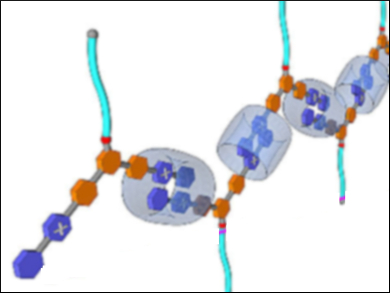Supramolecular helical fibers (SHFs) have attracted much attention in many fields. They usually need to contain chiral units to induce a chiral supramolecular self-assembly. Although progress has been made, strategies to design these achiral monomers that could form well-defined helical fibers, especially in aqueous solutions, are still rare.
Da-Hui Qu, East China University of Science & Technology, and co-workers, have developed a strategy to construct SHFs and their corresponding hydrogel in aqueous solution by using achiral monomers. Their V-type monomer was based on a rigid aromatic backbone with a fixed orientation of two terminal 4,4′-bipyridin-1-ium chloride (BPY+) derivatives and a hydrophilic triethyleneglycol chain. The BPY+ units formed a 1:2 host–guest system with cucurbit[8]uril (CB[8]) in aqueous solution, specifically supramolecular polymers, and well-defined SHFs upon addition of stoichiometric CB[8].
These helical nanofibers could afford a pH-responsive hydrogel, providing a novel strategy to construct smart polymeric materials. According to the researchers, their work could help design and construct water-soluble SHFs from readily available achiral monomers, leading to more tunable materials.
- Supramolecular Helical Nanofibers Formed by Achiral Monomers and Their Reversible Sol-Gel Transition,
Wen-Zhi Wang, Chuan Gao, Qi Zhang, Xu-Hao Ye, Da-Hui Qu,
Chem. Asian J. 2017.
DOI: 10.1002/asia.201601733




